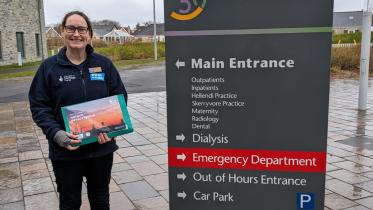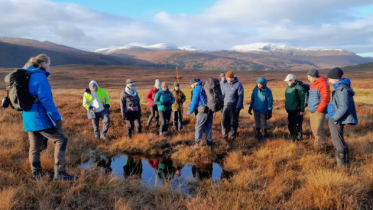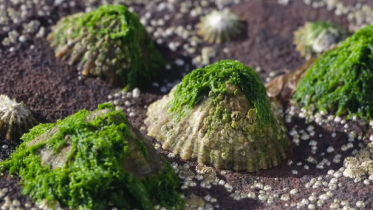
Why learn in local greenspace?
It has long been recognised that Outdoor Learning can bring many benefits, such as increased pupil engagement; greater challenge and enjoyment; improved physical and mental health; and raised attainment. But why learn in local greenspace?
Your local greenspace is likely to be more diverse than your school grounds, offering a greater diversity of learning opportunities: opportunities to apply concepts in a real context; capitalise on seasonal and other changes; experience the unexpected; use natural items; foster creativity and imagination; build resilience and independence - in fact, the opportunities are almost endless!
Your local greenspace is on your doorstep. Learning in local greenspace is more cost effective than hiring a bus to travel further afield and brings added benefits. It is more sustainable, making it more likely you can embed learning in local greenspace throughout the school and across the curriculum.
Engaging with your local greenspace can foster in your pupils a sense of place and stewardship and encourage the wider community to engage and value their local greenspace too. Connection to nature can last a lifetime and be a foundation for pro-environmental behaviours, helping your pupils become true responsible citizens.
Not yet convinced or need to convince others? Find out more about the Scottish educational policy that supports learning in local greenspace and what the research says below.
You may just want to get started and give learning in local greenspace a go; in which case head back to the main Beyond your boundary page and go to Finding your local greenspace.
If you are developing a whole school approach to learning in local greenspace, use our templates to carry out a short survey of colleagues; audit your greenspace; and create an action plan informed by these. The A whole school approach to learning in local greenspace section of this resource will also be useful.
Find out more
Templates: Greenspace Audit; Questionnaire to Inform Action Plan; Action Plan
Educational policy and learning in local greenspace
Scotland’s educational policy recognises the value of engaging with green and natural places, for example:
- The GTCS Standard for Registration requires teachers to use “outdoor learning, including direct experience of nature and other learning within and beyond school boundaries.” and “connect learners to their dependence on the natural world and develop their sense of belonging to both the local and global community”.
- How Good is Our School 4 states, as a feature of highly effective practice, “Outdoor spaces are used effectively to promote positive relationships and wellbeing. Staff take account of research linking benefits of outdoor learning and green space with wellbeing.”
- Learning in local greenspace can link with the key drivers for improvement and priorities of the National Improvement Framework.
- Education Scotland’s Outdoor Learning: Practical guidance, ideas and support for teachers and practitioners in Scotland lists some of the benefits of taking learning outdoors, including some relevant research (pp7-12).
- The Learning for Sustainability Implementation Group's Vision for 2030+ is that “all learners have daily contact with nature through thoughtfully developed green spaces and school grounds”
- The Play Strategy for Scotland emphasises the importance of children and families accessing local greenspace, stating “daily contact with nature and playing in natural spaces has additional benefits and promotes greater use of these community greenspaces as adults.”
- The Scottish Government remains committed to the EcoSchools programme; engaging with your local area is an essential element of the EcoSchools approach.
Find out more
- How Good is Our School 4 and learning in local greenspace
- Getting It Right For Every Child and learning in local greenspace
- National Improvement Framework and learning in local greenspace
Related links
- Education Scotland’s National Improvement Hub summary of Outdoor Learning resources, including Outdoor Learning: Practical guidance, ideas and support for teachers and practitioners in Scotland
- Learning for Sustainability Vision 2030+
- HGIOS4: a summary for Outdoor Learning and Learning for Sustainability
- Play Strategy for Scotland
- EcoSchools and your school community
What the research says about learning in local greenspace
NatureScot, national and international research highlights the value of learning in local greenspaces, for example:
- Our Teaching, learning and play outdoors survey found that “The effect of learning and play within green or natural places of all kinds… was particularly strong in generating greater engagement and challenge and enjoyment.” Greater engagement and challenge and enjoyment can equal higher attainment.
- A Natural England evidence briefing highlights “School students engaged in learning in natural environments have been found to have higher achievement (in comparison to their peers or projected attainment) in reading, mathematics, science and social studies, exhibiting enhanced progress in Physical Education and drama, and a greater motivation for studying science.”
- Our Teaching in Nature research found that “Repeat visits [which are more feasible when using a local greenspace] made a particular difference to the quality and depth of understanding and engagement with natural places… Teachers felt that repeated and regular visits resulted in improved fitness, confidence, and the many skills needed to navigate varied outdoor terrains… Repeat visits to sites over time encouraged a connection with place for many pupils, teachers and community members.” Repeat visits facilitate progression, breadth, depth and application.
- RSPB research found that “children who were more connected to nature had significantly higher English attainment”.
- Your greenspace is where your learners live. Learning in local greenspace can help foster a sense of pride and ownership in the local area. Evaluation of the Forest School programme, which incorporates repeat visits to a local greenspace, found “the impact of Forest School doesn’t just occur only in the child who is fortunate to have this experience, there are what we term ‘ripple effects’ within the family and within the wider community…”
- Time in nature can be calming and restorative for ASN and mainstream pupils alike, helping them focus better: Taylor et al., (2001) found that children function better than usual after activities in green settings and that the ‘greener’ a child’s play area, the less severe his or her attention deficit symptoms. A Spanish study also found an improvement in cognitive development associated with surrounding greenness, particularly with greenness at schools.
Find out more
- Teaching, learning and play in the outdoors: a survey of school and pre-school provision in Scotland
- Teaching in Nature research
Related links
- Natural England Evidence Briefing: Links between natural environments and learning (EIN017)
- The Impact of Children’s Contact with Nature. A Report for RSPB
- A marvellous opportunity for children to learn. A participatory Evaluation of Forest School programme in England and Wales.
- Coping with ADD: the surprising connection to green play settings
- Green spaces and cognitive development in children






